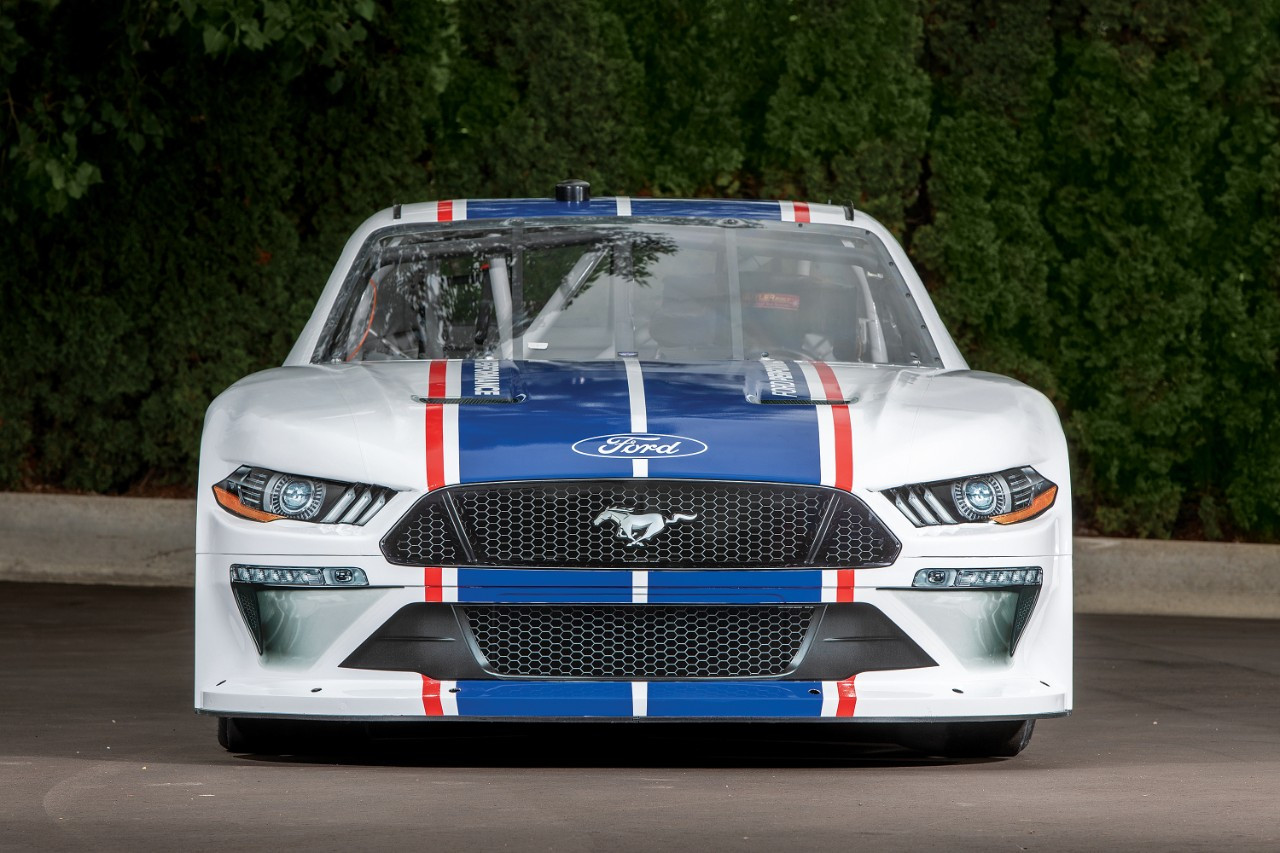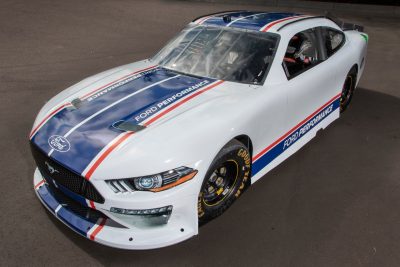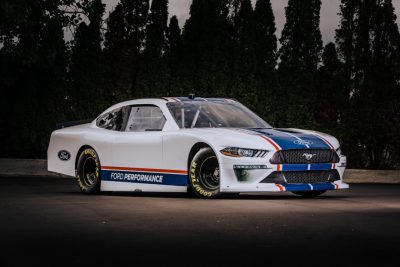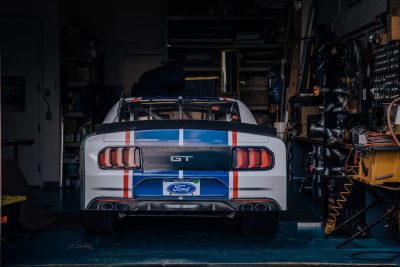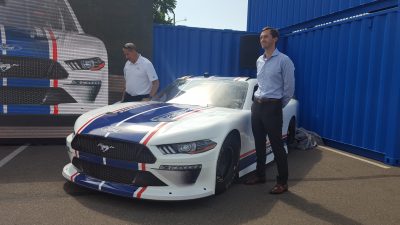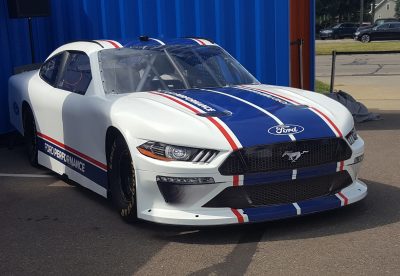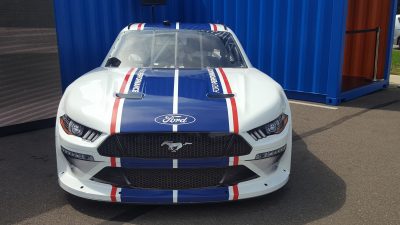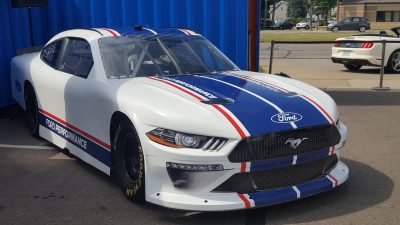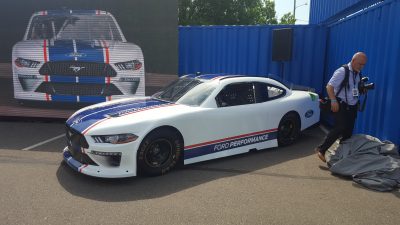Using the dynamic backdrop of the 2019 Woodward Dream Cruise as an enviable world stage, Ford Performance took the veil of secrecy off of its updated Xfinity Series racing Mustang, which aims to continue the impressive success that the Mustang has had in NASCAR since it made its return to that sport in 2011.
While the rules governing NASCAR prevent the updated racer from adopting radically altered body work, Ford designers still managed to make the new racer stand out from its predecessors. The graphics work for example has been updated to better reflect the current Mustang, with familiar cues such as the updated headlights, front grille, and the trademark rear styling being present and accounted for.
The car is also the fruits of Ford’s revamped Performance Technical Center in Concord, North Carolina. Once a facility dedicated to exclusively creating race focused projects, the complex has evolved, and can now handle being a test bed for the development of future production vehicles including the 2020 Mustang Shelby GT500.
But look underneath the bodywork, and some of the Mustang’s engineering enhancements do make themselves apparent. While most of the parts are largely unchanged from components that have been doing the job for decades, New testing methods have played a big part in improving handling and durability, but without sacrificing the affordability quotient that has helped the Xfinity series be an excellent value for the dollar juggernaut for the past several decades. Unlike other racing organizations that are slowly embracing electrification and other green technology to help increase power and reduce emissions, NASCAR has not formally announced such an initiative as of this writing, so look for the current 358 cubic inch V8 to soldier on virtually unchanged (carburetors included.) Designed to make about 700 horsepower or so (tune varying) this is pretty much as basic and old school of a setup as it gets.
Look for the 2020 Xfinity Series Mustang to make its racing debut at the 2020 Daytona 500 in February. When it arrives there, it will face a whole new field of contenders, with the Chevrolet SS and the Camry being replaced by the Camaro and Supra respectively. But a question one might ask if why still focus precious dollars on a sport that is going through a rough patch both in of terms ratings and overall relevance?
The answer is that while NASCAR has less of the marketing power that it once had during its peak in the late 1990s and early 2000s when names like Jeff Gordon and Dale Earnhardt ruled the track, the racing series is still a very key marketing platform for companies like Ford. Accordingly, it’s important for these firms to have entries that are as relevant as possible to their street focused counterparts, so they can effectively reach out to not only racing diehards that grew up watching the sport from its humble roots, but also a broader younger audience that might be tuning in via television and social media.

Carl Malek has been an automotive journalist for over 10 years. First starting out as a freelance photographer before making the transition to writing during college, his work has appeared on numerous automotive forums as well as websites such as Autoshopper.com.
Carl is also a big fan of British vehicles with the bulk of his devotion going to the Morgan Motor Company as well as offerings from Lotus, MG, and Caterham. When he is not writing about automobiles, Carl enjoys spending time with his family and friends in the Metro Detroit area, as well as spending time with his adorable pets.

